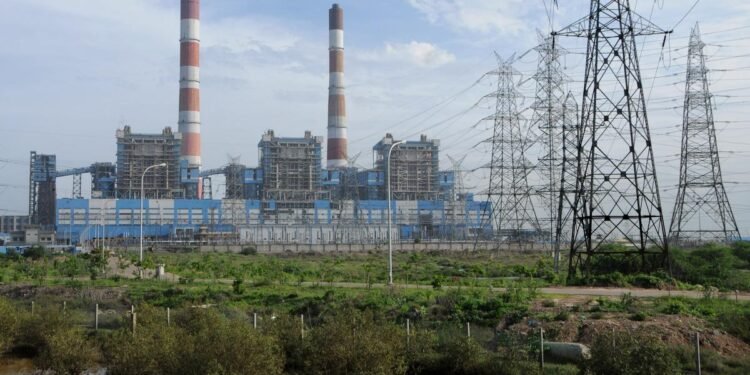Bhubaneswar- Despite proven benefits of flue gas desulfurization (FGD) in reducing sulfur dioxide (SO₂), PM2.5, and mercury emissions, and producing reusable gypsum for the cement industry, a majority of Odisha’s coal-fired power units have been exempted from installing this critical pollution control technology.
India is the world’s largest emitter of SO₂, contributing nearly 20% of global anthropogenic SO₂ emissions. Coal-fired power plants account for 60% of India’s SO₂ output, as they burn 70% of the country’s coal. Emission norms introduced in 2015 mandated the use of FGD systems to cut SO₂ emissions from power plants, but after repeated extensions, a July 2025 notification has diluted these requirements.
Under the latest rollback, Category C power plants are now completely exempted from installing emission control equipment and only need to meet stack height norms. Category B plants will be assessed on a case-by-case basis by the Environmental Appraisal Committee while Category A’s 2027 deadline remains.
Odisha’s power plants largely exempted
The state has 19 thermal power units totaling 9,340 MW. Of these, 16 units (8,290 MW) fall under Category C and are exempted from pollution controls. Remaining 3 units (1,050 MW) are in Category B- also at risk of being exempted. And there are no plants under Category A. This means nearly all 100% of the state’s coal power capacity could continue polluting without SO₂ controls. Of the 19 power plant units in the state, not a single one has installed FGD systems, not even the state-owned ones.
Air quality in Odisha is already under stress
CPCB monitors ambient air quality in 16 cities across Odisha. Data from January-June 2025 shows that 14 cities exceed the PM2.5 National Ambient Air Quality Standard (NAAQS) of 40 µg/m³, and all 16 exceed the PM10 standard of 60 µg/m³.
Studies show power plant pollution can travel over 200 km, worsening transboundary pollution. IIT Delhi found that power plants contribute 5-8% of PM2.5 in Odisha’s airshed. City-level estimates by IIT Bombay show 7-56% of PM2.5 in Rourkela, Angul, Balasore, Cuttack, Kalinga Nagar, Bhubaneswar and Talcher cities comes from the power sector.
Further, Odisha has seven cities under the NCAP. Exempting this it will further delay the achievement of up to 40% reduction in pollution levels in NCAP cities.
Health and environmental impacts
Power plants are responsible for up to 2,800 premature deaths annually in Odisha during 2018. Moreover, studies show PM2.5 from power plants is twice as toxic as that from other sources.
Coal power plants are also India’s largest industrial mercury emitters, releasing up to 186 tonnes annually – 40% of the national total. Wet FGDs can capture up to 30–40% of oxidized mercury, offering a significant co-benefit.
Untapped potential of FGD gypsum
FGD systems produce synthetic gypsum, a by-product that is chemically similar to natural gypsum and can fully meet India’s demand for gypsum in cement manufacturing. This supports circular economy goals by reducing reliance on mining and minimizing industrial waste. However, due to low compliance and widespread exemptions, this valuable resource remains largely unutilized.
Manoj Kumar, Analyst at the Centre for Research on Energy and Clean Air, said, “Power plants are among the largest contributors to SO₂, secondary PM2.5 and mercury pollution. Exempting emission norms poses serious threats to public health, hampers progress toward NCAP goals, and limits the opportunity for industrial reuse through FGD gypsum.






